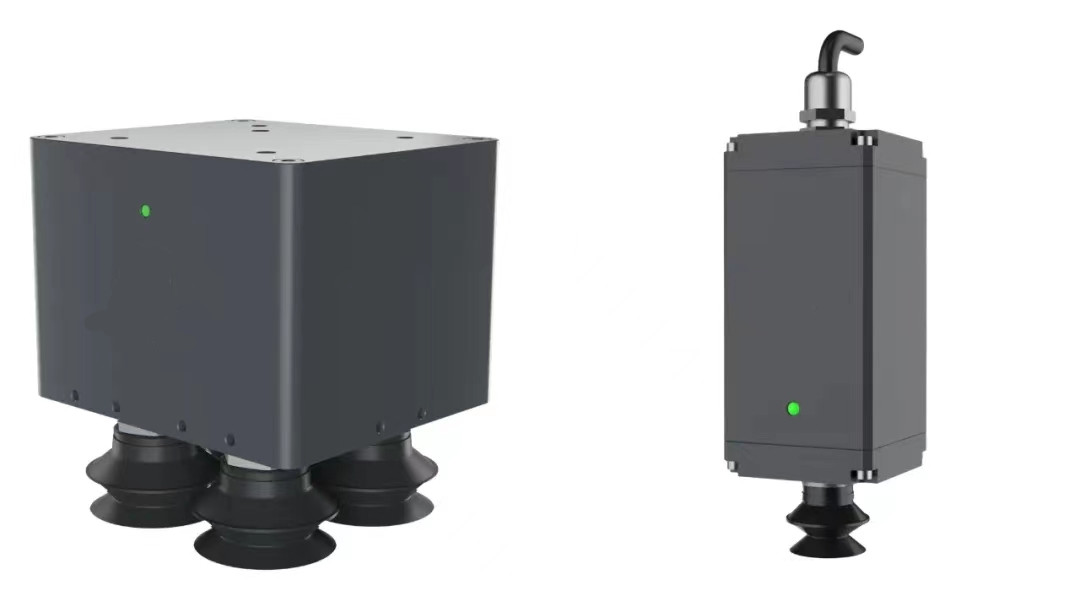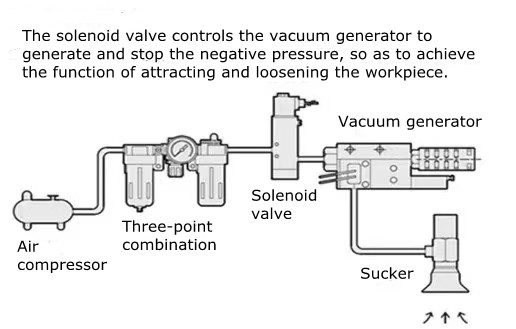

Recently, JD Robotics launched EVS series electric vacuum actuators developed independently, including EVS08 and EVS01.

The traditional pneumatic vacuum system is a pneumatic system that uses a positive-pressure air source to generate negative pressure, which makes it possible to achieve vacuum adsorption at the end where there is compressed air. The vacuum generation system is widely used in industrial automation, mechanical processing, 3C electronics, packaging logistics, printing, plastics, robots, and other fields. The method generally includes components: 1. compressed air source; 2. Filter; 3. Switch solenoid valve; 4. Vacuum actuator; 5. End suction cups, airbags, etc. (Typical structure is shown in the figure below).

In addition, in order to monitor the vacuum adsorption process, a flowmeter, pressure detection switch, proximity switch, etc. are generally added to the system.
The complexity of the whole system is high, and the installation and commissioning are complex. High energy consumption and 100% dependence on gas sources. It also produces noise pollution.
The EVS electric vacuum actuator of JD Robotics is a new generation electric intelligent vacuum actuator that does not need to provide additional compressed air. Their application fields include mobile robot platforms, 3C electronic assembly, lithium battery manufacturing, semiconductor manufacturing, express logistics, and many other scenes.

The electric vacuum actuator of JD Robotics has an integrated interface for controlling and monitoring the whole process of adsorbing objects and can control the vacuum degree of the vacuum actuator through commands. It can be connected through the IO link to monitor the adsorption process and perform predictive maintenance. Status monitoring reduces errors and downtime, which ensures the availability of the system. The 24V low-voltage design is adopted, and the energy consumption is 20% of the traditional pneumatic system. The adsorption force at the end can be set and adjusted. Its advantages and characteristics are as follows:
① Compact structure and lightweight: with loads of the same weight, the EVS is 30% smaller than the traditional pneumatic size. It can be connected with the connector at the end of the mechanical arm to achieve load absorption, which is especially suitable for stacking, handling, and other scene operations;
② Rich terminal configuration: various types of suction cups, airbags, and other components can be configured to grasp different objects, including square, spherical and special-shaped components;
③ Dual channels can be independently controlled: easily control the left and right sides of the vacuum actuator, and the two sides are independent of each other, further improving the working efficiency of the production line. The sucking and placement can be carried out at the same time, which greatly facilitates the handling and sorting of objects and saves space and time;
④ Adjustable suction: the vacuum degree can be adjusted according to the characteristics of the product sucked, and the vacuum can be compensated in real-time;
⑤ State feedback: it has a vacuum feedback sensor, which can detect the sucking state of objects in real time for feedback and alarm;
⑥ Power off protection: after power off, it can realize sucking power off self-locking to protect the sucked objects;
⑦ Strong adaptability: support 24V I/O and MODBUS RTU (RS485) communication protocols;
⑧ Easy to install and debug: The communication protocol is simple and readable, greatly reducing the difficulty of debugging. In addition, the upper computer debugging software can be attached, and the function parameters can be set and edited offline.
In the future, JD Robotics will continue to develop new products in this field, meet the needs of customers in different industries, and make the most competitive executive parts for automation in the industry.
